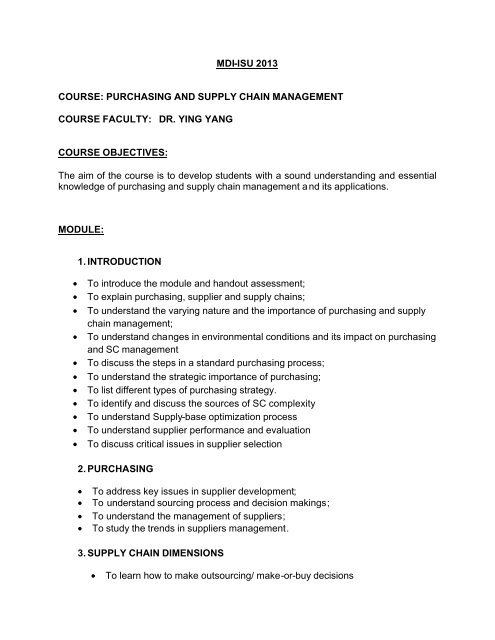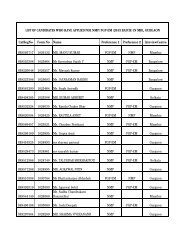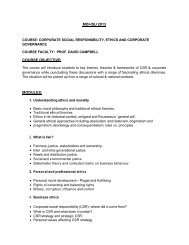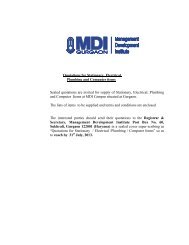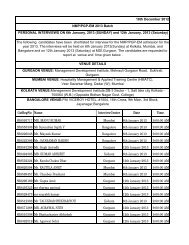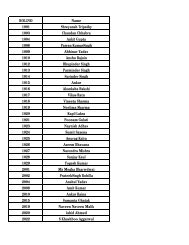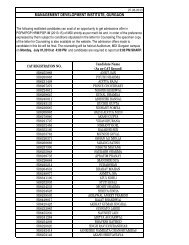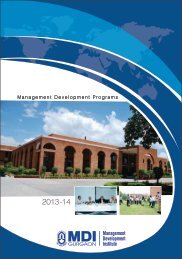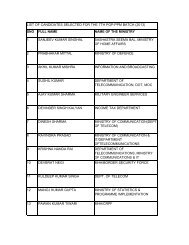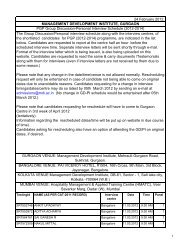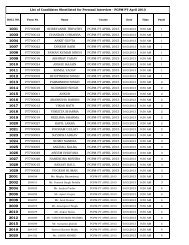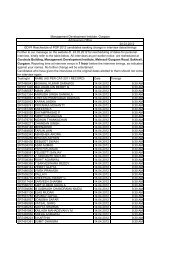PURCHASING AND SUPPLY CHAIN MANAGEMENT
PURCHASING AND SUPPLY CHAIN MANAGEMENT
PURCHASING AND SUPPLY CHAIN MANAGEMENT
Create successful ePaper yourself
Turn your PDF publications into a flip-book with our unique Google optimized e-Paper software.
MDI-ISU 2013<br />
COURSE: <strong>PURCHASING</strong> <strong>AND</strong> <strong>SUPPLY</strong> <strong>CHAIN</strong> <strong>MANAGEMENT</strong><br />
COURSE FACULTY: DR. YING YANG<br />
COURSE OBJECTIVES:<br />
The aim of the course is to develop students with a sound understanding and essential<br />
knowledge of purchasing and supply chain management and its applications.<br />
MODULE:<br />
1. INTRODUCTION<br />
• To introduce the module and handout assessment;<br />
• To explain purchasing, supplier and supply chains;<br />
• To understand the varying nature and the importance of purchasing and supply<br />
chain management;<br />
• To understand changes in environmental conditions and its impact on purchasing<br />
and SC management<br />
• To discuss the steps in a standard purchasing process;<br />
• To understand the strategic importance of purchasing;<br />
• To list different types of purchasing strategy.<br />
• To identify and discuss the sources of SC complexity<br />
• To understand Supply-base optimization process<br />
• To understand supplier performance and evaluation<br />
• To discuss critical issues in supplier selection<br />
2. <strong>PURCHASING</strong><br />
• To address key issues in supplier development;<br />
• To understand sourcing process and decision makings;<br />
• To understand the management of suppliers;<br />
• To study the trends in suppliers management.<br />
3. <strong>SUPPLY</strong> <strong>CHAIN</strong> DIMENSIONS<br />
• To learn how to make outsourcing/ make-or-buy decisions
• To understand supply chain relationships<br />
• To understand and apply supplier relationship models<br />
• To explore how to manage outsourcing relationship<br />
• To understand the role of performance measurement<br />
• To discuss the traditional measurement<br />
• To familiar with supply chain measurement (supply chain measures)<br />
• To apply methods of evaluating supplier performance<br />
• To discuss various roles of inventory<br />
• Understand the characteristics of forecasts<br />
• To explore different types of forecast and time Horizon in forecasting<br />
• To understand and apply different types of forecasting methods<br />
o Qualitative methods<br />
o Quantitative methods<br />
• To discuss JIT and MRP<br />
4. <strong>SUPPLY</strong> <strong>CHAIN</strong> OPERATIONS<br />
• To understand the importance of SC integration;<br />
• To describe the integration methods;<br />
• To discuss the emergence of SCM as a strategic response to a changing<br />
competitive environment;<br />
• To identify various SC strategies;<br />
• To introduce the concept of supply chain risk management and continuity;<br />
• To examine sources of supply chain risk;<br />
• To identify strategies for reducing risk for the supply chain;<br />
• To examine ways of improving the resilience of the supply chain.<br />
• Discuss the contemporary SCM issues;<br />
• Identify the issues driving globalization;<br />
• Explain how globalization has changed the rules of competition;<br />
• Discuss the critical issues involved in designing a global supply chain<br />
network.<br />
PRE-COURSE READINGS:<br />
• Lysons, K. and Farrington, B. Purchasing and supply chain management, 7th edition.<br />
Pearson Education Ltd. (2006).<br />
• Monczka, R. M., Trent, R.J. and Handfield, R.B. Purchasing and Supply Chain<br />
Management, 3e. Thomson Learning (2005).<br />
DELIVERABLES:<br />
After the completion of the course will provide an opportunity to develop their knowledge<br />
of concepts and practices of purchasing and supply chain management. Would<br />
encourage students to opt for higher studies.
COURSE EVALUATION:<br />
• Pre-course Assignment 30%<br />
• Group Project 30%<br />
• End Term Exam 40%


